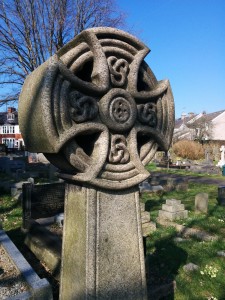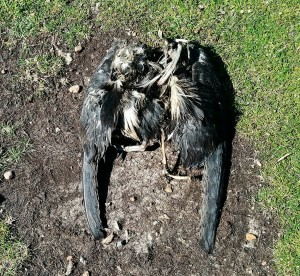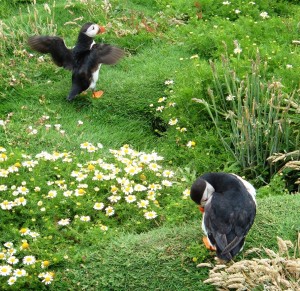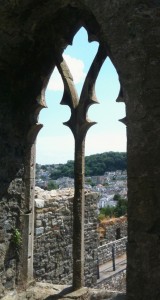I have walked past this church so many times but until recently never noticed how lovely some of its old headstones are in its surrounding cemetery. I have now, and here are a few of them.
Tag: Wales
On the island of Skomer, off the coast of Wales, is the largest population of Manx Shearwaters in the world. Under cover of the middle of the night, they fly in from the sea where they have been feeding. Hundreds of thousands of birds go hell for leather into the safety of their underground burrows. In the morning, the paths of Skomer are littered with the occasional bodies, or what is left of them, of the unlucky ones who didn’t make it but instead fell prey to the Greater Black Back Gulls who feed on them. All that is left is a pair of wings on a path and they fascinate me. They are the most striking memento mori – reminders that we must die – that I have ever seen (and I’m a gal who likes a good memento mori). So a typical morning on Skomer is: get up, have some coffee, hike, hike, hike, and oh, hey, remember that we must die: thanks guys, got it. And strangely, these visceral tokens of life and how quickly and randomly it is snuffed out are so lovely and unlikely.
From my post on Skomer:
The next morning, paths around the island are [read more]
Off the west coast of Wales is an island called Skomer, one of the most strange and beautiful places I have ever seen. In the summer it is inhabited by hundreds of thousands of sea birds, many rabbits, and very few humans. A limited number of day visitors come and go by ferry; no more than 14 guests are allowed to stay overnight.
It is a place of crazy, senseless beauty but for me the most luxurious part of the visit is the silence, except it isn’t really silence: the cries of a million birds can be pretty raucous. It’s just that there are almost no human noises. Walk away from the hostel after the last ferry leaves taking the day visitors and you are quite alone. No cars, no telephones, internet, screens, television, restaurants, or gift shops. Time there is about cultivating and going into this silence that isn’t really silence.
You sit down on the grass over a cliff to watch a fulmar, that graceful, snowy cousin of the albatross, soar in circles as it catches a thermal. An hour goes by, and you rise feeling still and grounded and fed by something you didn’t know you were hungry for [read more]
Something I never get used to – in the best possible way – are the castles scattered around the Welsh countryside. As an American I am pretty much bowled over by anything from the 19th century; ruins from the 12th leave me slackjawed. The natives, not so much, and as far as I can tell only notice them when American friends are visiting.
Six miles from my apartment in Swansea is Oystermouth Castle, in the village of Mumbles. It dates from 1106 when it was built by the Earl of Warwick. Like most castles in Wales it was a stronghold for English, would-be rulers who oppressed the local population. They were bitterly hated and over the centuries the castle fell back and forth between the British interlopers and the Welsh rebels who regularly ousted them. It remained in private hands until 1927.
In 2010, the castle underwent extensive renovations. Included was a glass floor 30 feet above the ground, which provides a viewing platform for the windows of a chapel that was added in the 1320s, and is today called Alina’s Chapel. The stained glass has been gone for centuries but today, looking through the arched windows, you can [read more]


 Follow
Follow



